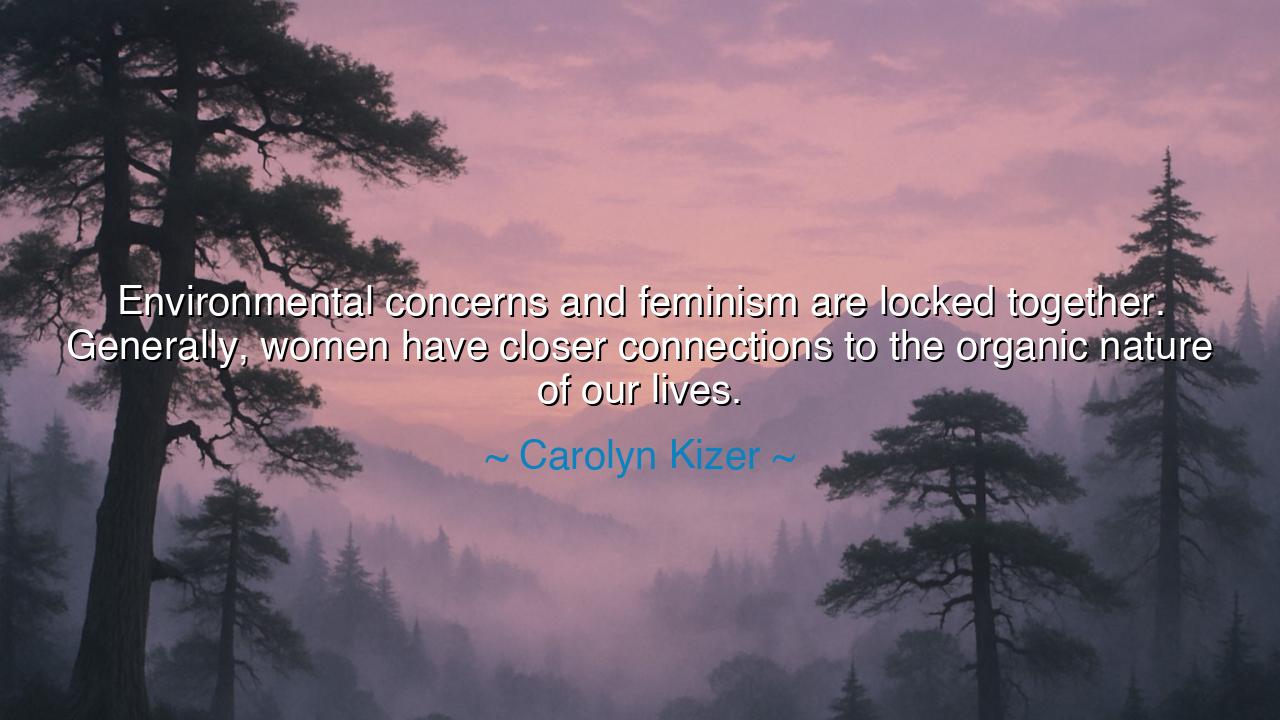
Environmental concerns and feminism are locked together.
Environmental concerns and feminism are locked together. Generally, women have closer connections to the organic nature of our lives.






Hear the luminous words of Carolyn Kizer, poet and prophet of her time: “Environmental concerns and feminism are locked together. Generally, women have closer connections to the organic nature of our lives.” In these words she binds two great struggles into one: the struggle for the preservation of the earth, and the struggle for the dignity of women. She proclaims that these are not separate battles but joined destinies, each reflecting a deeper truth—that exploitation of the land and oppression of women spring from the same spirit of domination, and that healing must come to both.
At the heart of her saying lies the truth of connection. For centuries, women have borne the closest ties to the cycles of birth, nurture, and sustenance. They have tilled gardens, fetched water, cared for children, and managed the resources of daily life. Thus, women’s voices have often been the first to cry out when rivers are poisoned, when soil is barren, when food is scarce. To Kizer, this closeness to the organic nature of life grants women a unique wisdom—an embodied understanding of how human survival is inseparable from the health of the natural world.
History gives us powerful witnesses to this truth. In the hills of India, the women of the Chipko movement embraced trees with their own bodies to prevent loggers from cutting them down. Their defiance was not born of politics alone but of survival, for they knew the forests sheltered their families, protected their water, and preserved their livelihood. Here feminism and environmentalism were not abstract philosophies, but living realities intertwined. To defend the land was to defend their children, and to defend their children was to affirm their voice as women.
This unity is also seen in the legacy of Wangari Maathai of Kenya, who led the Green Belt Movement. By planting millions of trees, she not only healed the land but also empowered women, giving them work, dignity, and authority in their communities. Her life embodied Kizer’s wisdom: to restore the earth is to raise up women, and to raise up women is to restore the earth. These stories reveal that the battles for equality and sustainability are two strands of the same braid, woven together by necessity and by justice.
The deeper meaning of Kizer’s words is also spiritual. To be locked together means that neither movement can succeed in isolation. Environmentalism that ignores women’s voices is incomplete, for it forgets those who stand closest to the rhythms of nature. Feminism that ignores the earth is likewise diminished, for true liberation cannot come in a world scarred by exploitation and decay. Only when both rise together does humanity move toward wholeness.
The lesson for us is clear: when we fight for the planet, we must also uplift the voices of women; when we fight for women’s dignity, we must also protect the earth. Each choice we make—what we consume, how we vote, whom we listen to—either deepens the chains of exploitation or helps to break them. True progress demands that we see the unity of these causes, and act not with division, but with solidarity.
Therefore, children of tomorrow, heed the teaching of Carolyn Kizer. Honor the voices of women, honor the voice of the earth. Do not allow either to be silenced. Plant trees, defend the waters, raise your voice for justice, and remember that the liberation of one is bound to the liberation of the other. For only when both women and the earth are free will humanity walk in balance, dwelling in harmony with the organic nature of our lives.






AAdministratorAdministrator
Welcome, honored guests. Please leave a comment, we will respond soon